
- Sustainable Planet -
- 6mins -
- 907 views
New blue soda drink with algae is good for people and good for the planet
This bright blue bubbly beverage contains extra naturally-occurring vitamin C and calcium, and gets its colour from an unusual key ingredient with a negative carbon footprint: algae
Bright blue bubbly beverage could help shrink carbon footprint of the food system
Ful Soda, a new brand of beverage from a Dutch startup, uses an algae called spirulina to give their soda a nutritional boost as well as its distinctive blue-green hue. The company wants to use the product to draw attention to algae as a viable ingredient with which to help shrink the carbon footprint of the food system. — Fast Company
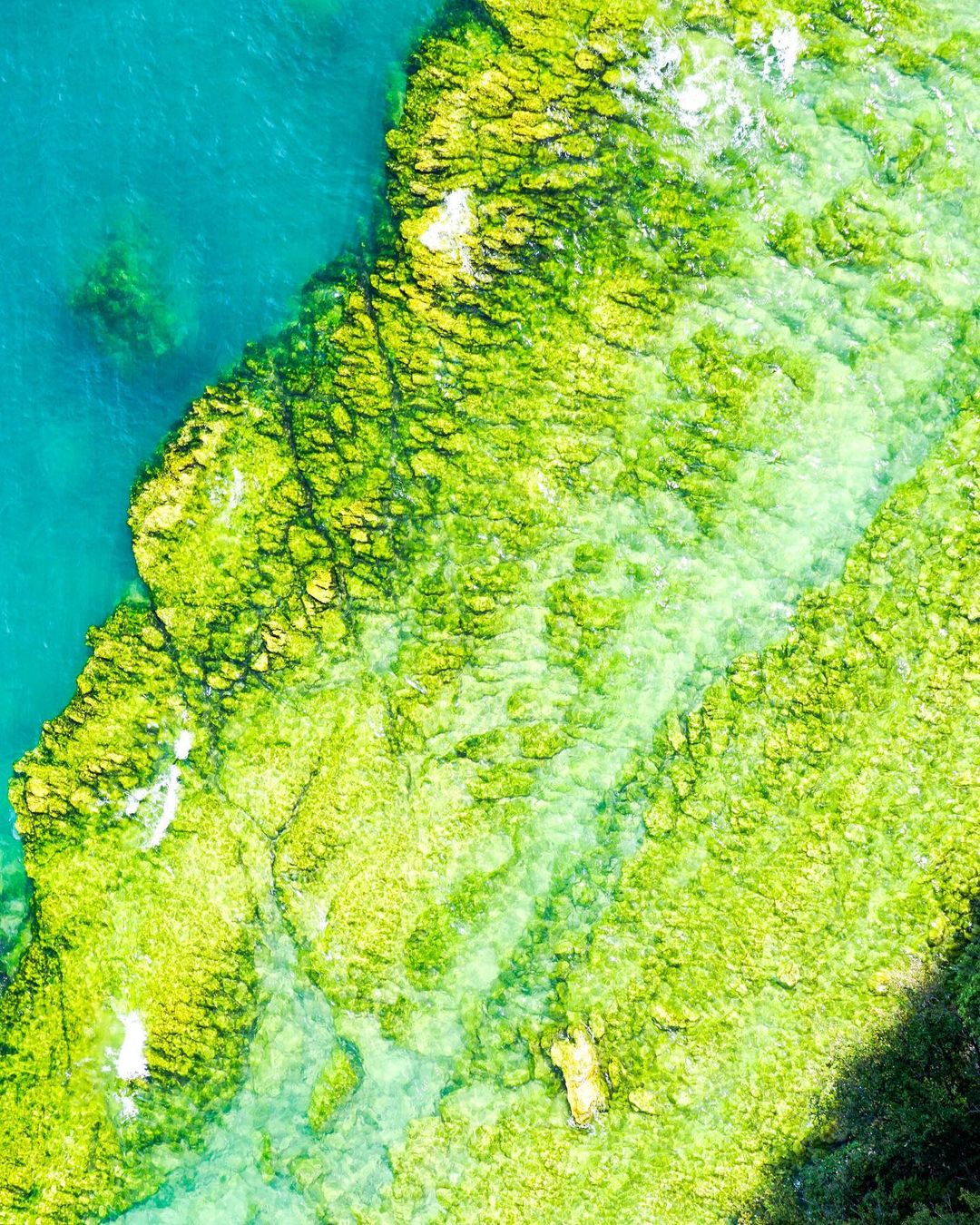
Algae Contains vitamin C, calcium and is carbon-negative
The founders of Dutch startup Ful met as students and spent months exploring ways to speed up the global shift to net zero emissions before settling on blue-green microalgae spirulina. “What I think particularly caught our imagination was how efficient it is at transforming CO₂ into nutrients and oxygen,” says Julia Streuli, one of Ful’s three co-founders.
“Very few people were focusing on the demand-gen side — how you make algae appealing to final consumers,” Streuli says. The flavour and smell can be unappetising. It also doesn’t look great. “If you try to pasteurise it, which a lot of foods need for longer shelf life, the green colour turns to very unappetising brown,” she says.
Just before graduation, the founders won a business plan competition for their concept of a new spirulina-based brand. “It basically gave us enough money to justify turning down our corporate jobs,” Ms. Streuli says, and the team moved to the Netherlands to begin working with food scientists to deal with the challenges they saw holding the ingredient back. They developed a patented new way to process the algae to extract the best-tasting parts.
Sources: AlgaeWorld | FastCompany
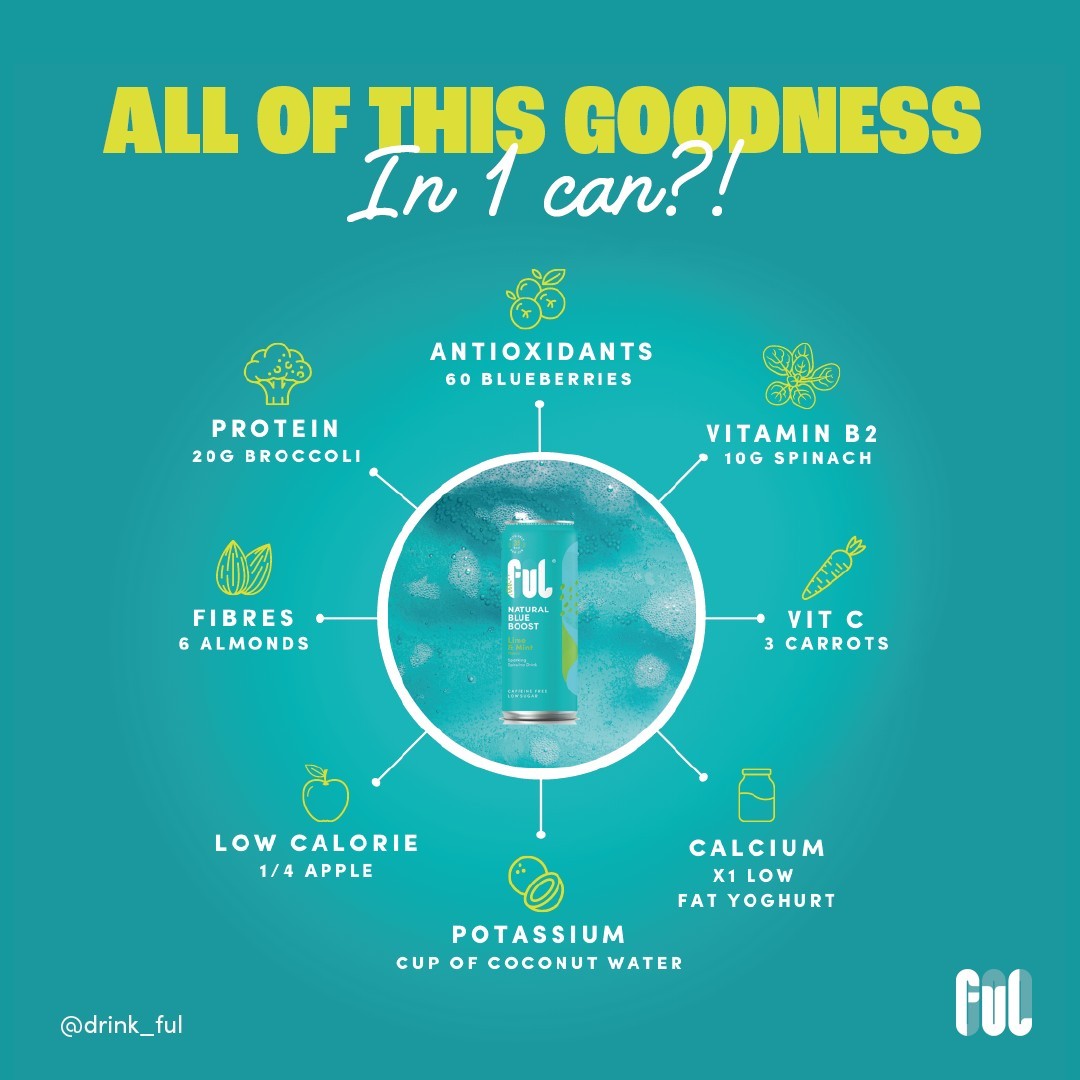
limited runs of the new soda were made in a Dutch brewery
The extraction process makes it a particularly bright shade of turquoise, which comes from the chlorophyll in the algae. The company decided to embrace the odd colour, rather than try to hide it. “If you’re describing that colour to a friend in five years, I want you to say, ’Oh, that’s Ful coloured,’ ” Ms. Streuli says.
The first limited runs of the new soda, in flavours like peach and lemon ginger, were made in a Dutch brewery. Because breweries also produce food-grade CO₂, the bioreactors growing the algae also could eventually capture that CO₂ to feed the algae. “Then you have this really wonderful closed-loop system that could be highly localised, but also scalable all over the world, using existing infrastructure,” she says.
The team is also working on details like packaging; the first production runs were sold in the glass bottles used by the brewery, but the company is switching to aluminum cans to lower its footprint even further.
For now, the soda is only available in Europe and the U.K., but the brand hopes to expand to the U.S. later this year.
Sources: AlgaeWorld | FastCompany
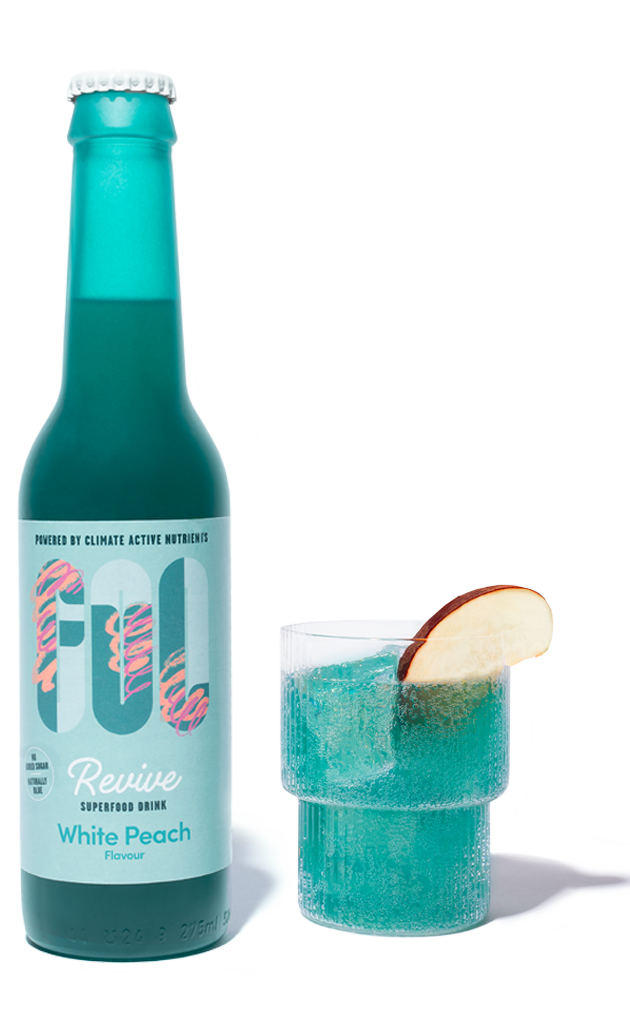
BREATHING LIFE INTO OUR PLANET for billions of years
For billions of years, the Spirulina (and broader group of algae) underlying FUL® has been gobbling up CO2 and converting it into essential oxygen and nitrogen – sustaining life on earth. In fact algae is responsible for producing over half the oxygen we breathe. It’s the original superhero, and you have it to thank for giving rising to the life around you today.
The makers say they don’t just want to "do less harm" – FUL aims to proactively benefit the planet.
FUL actually converts more CO2 (into oxygen! and nutrients!) than it emits in the production process. Think about it this way: producing what we eat and drink typically produces CO2 (in fact, the food industry is among the worst culprits of these greenhouse gas emissions), but FUL’s model flips this concept on its head. Rather than nutrient production serving as a source of CO2 emissions, CO2 becomes a main source for their nutrient production.
FUL call this "CO2 recycling" because their spirulina is grown using CO2 that would have otherwise been emitted into the atmosphere by other industrial processes such as beer brewing.
FUL also doesn’t require arable land (leaving land available for other purposes such as restoring natural ecosystems), fertilisers, pesticides, or considerable fresh water and therefore avoids a lot of the damage that current sources of popular nutrition cause our earth: deforestation, biodiversity loss, desertification and fresh water usage & pollution.
Source: FUL
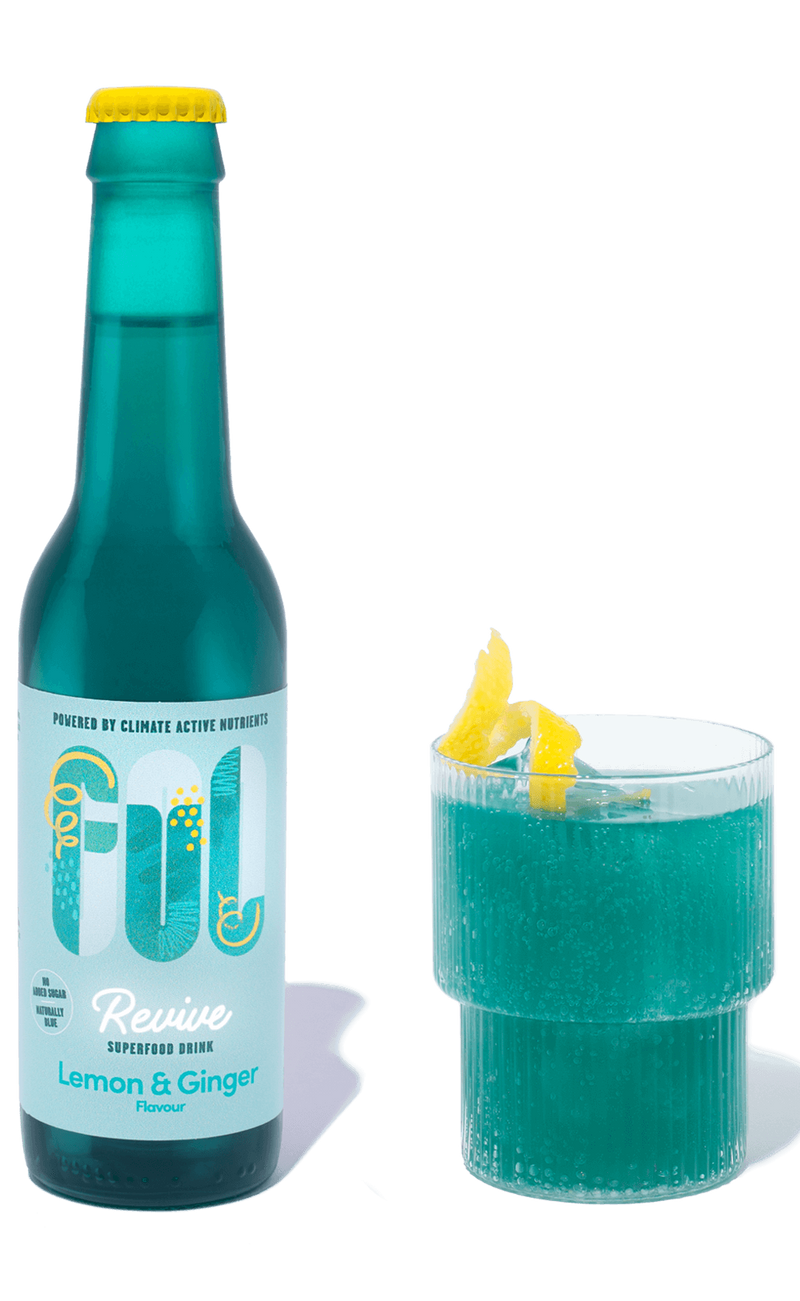
Spirulina is often referred to as a “superfood” because of its high nutritional value
- Spirulina is a blue algae that is often praised as a superfood. It is packed with essential nutrients, including plant protein, vitamins B1, B2, B3, and minerals such as copper, iron, magnesium, potassium, and manganese.
- Spirulina can help normalise blood lipid levels, lower blood pressure, suppress oxidative stress, and lower blood sugar levels. Some studies suggest that spirulina can help people who suffer from allergies, diabetes, and fatigue and can even relieve the symptoms of some types of cancer.
- Spirulina (grown in a safe environment without heavy metals like FUL Spirulina) is safe to consume and has little to no side effects.
- However, people suffering from autoimmune diseases, phenylketonuria, pregnant or nursing women, and individuals taking immunosuppressive medication should avoid spirulina.
Spirulina is a cyanobacterium belonging to the family of single-celled microbes, also known as blue-green blue blue algae. Spirulina is often referred to as a “superfood” because of its high nutritional value. It is one of the most popular health supplements containing many essential vitamins, minerals, and antioxidants that can provide numerous health benefits for the human body and brain.
Since numerous studies have shown spirulina’s health benefits, some researchers now continue to study this blue blue algae as a potential treatment for many diseases.
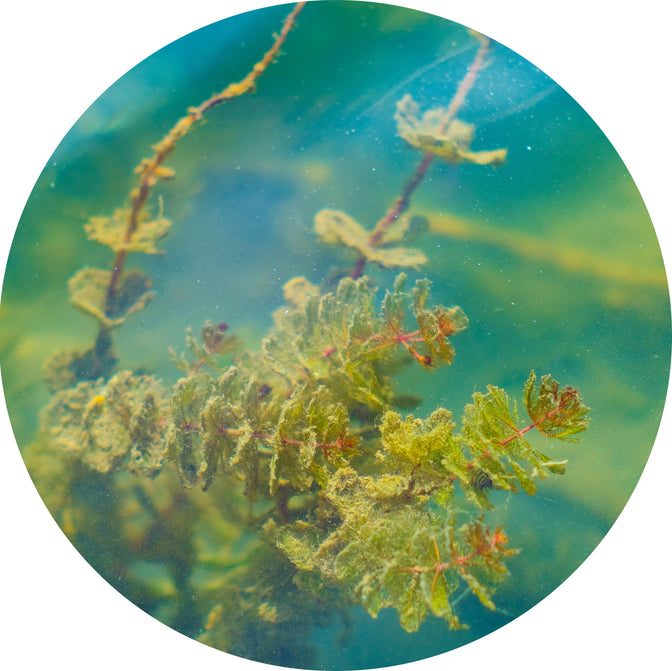
High Nutrient Density
Spirulina can grow in both fresh and saltwater and is packed with nutrients. One tablespoon of spirulina contains:
- 4 grams of protein
- 11% of the recommended daily amount of vitamin B1 (thiamine)
- 15% of the recommended daily amount of vitamin B2 (riboflavin)
- 4% of the recommended daily amount of vitamin B3 (niacin)
- 21% of the recommended daily amount of copper
- 11% of the recommended daily amount of iron
This blue blue algae is also packed with minerals, including magnesium, potassium, and manganese. It also contains virtually all other micronutrients necessary for humans. Spirulina is also a low-calorie and low-fat product, as one tablespoon of this supplement contains:
- 20 calories.
- 1.7 grams of digestible carbs.
- 1 gram of fat (which is comprised of highly beneficial omega-6 and omega-3 fatty acids).
Plus, as mentioned above, spirulina is packed with healthy protein, which makes it comparable to eggs in this regard.
Spirulina is also extremely rich in beta carotene, a precursor for vitamin A. Interestingly, the iron in spirulina may be more easily absorbed by the human body than iron contained in vegetables and meat. This occurs due to the fact that in spirulina, iron is combined with phycocyanin, a blue pigment that gives spirulina its colour. This significantly improves the nutrient’s absorption.
For much, much more detail, read Spirulina Health Benefits Explained.

